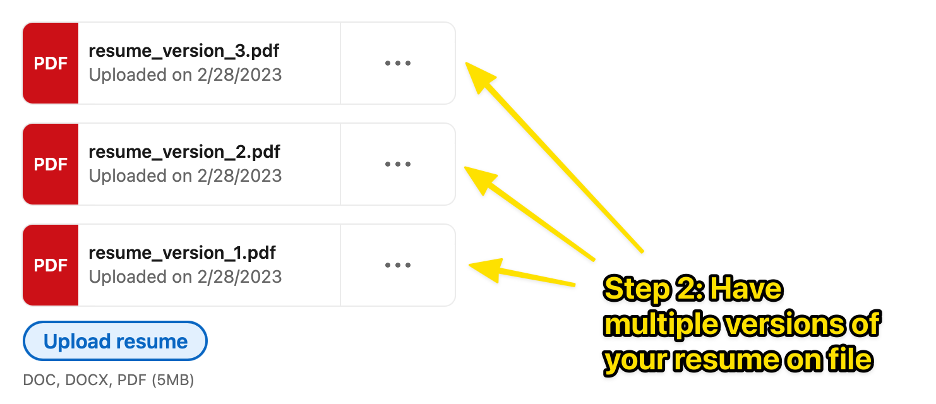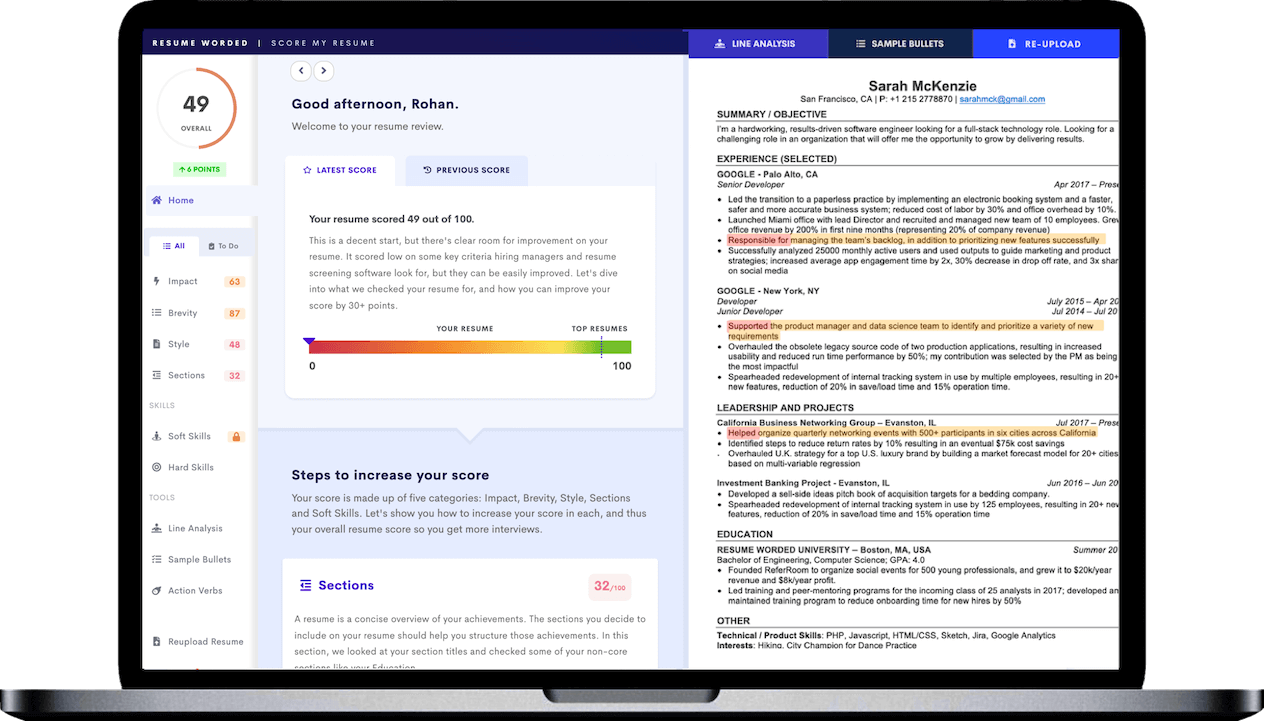If you work in a writing or research-heavy field, you’re undoubtedly familiar with “publish or perish.” Publications can help establish credibility, demonstrate expertise in your field, and show your research skills firsthand. But once you’ve done that, what comes next?
If you’re looking for a new job — or even considering one — the answer is, “add those publications to your resume or CV.” In this article, we’ll cover exactly how to do that, including:
- Where to put publications on your resume
- What publications to include
- The correct citation format to use
- Tips for highlighting specific contributions and accomplishments
- Common mistakes to avoid
- The difference between a resume and CV (and how to list publications on each)
How to list publications on a resume
- Choose where to list your publications. Depending on how many publications you want to list, publications should be listed either in a dedicated Publications section or in a subheading within your Education section.
- Choose a format (more on this below) and use it consistently. Don’t switch between citation formats, even if they’re both correct. Consistency in citation format makes it easier for employers to read and compare publications and shows attention to detail and professionalism.
- List your publications in reverse-chronological order, with the most recent at the top.
- Cite the names of any authors in the order listed on the publication.
- Enter the name of the article, chapter, or book.
- Include the name of the journal, website, or conference where it was published.
- Add the date of publication.
How to list publications on a CV
- Create a section toward the end of your CV (after your education and professional accomplishments).
- Give it a clear heading like “Publications.”
- Choose a citation style and use it consistently — generally either MLA or APA. List any relevant publications in reverse-chronological order, with your most recent publication at the top.
- Omit any publications that aren’t relevant (i.e. publications that are unrelated to the position you’re applying for or that have since become obsolete).
Examples of how to put publications on a resume
In your Education section
Your Education section is the best place to list publications if:
- You’re running low on space
- You only want to list one or two significant publications
- Your Education section is at the top of your resume (this is usually the case if you’re a current student, recent graduate, or career changer)
Here’s what it should look like:
In your Publications section
You should list publications in a dedicated Publications section if:
- You’re applying for a job where publications are expected and you want to make sure they stand out
- You’re using a CV instead of a resume
- You’re listing multiple publications
Here’s what it should look like:
If you’re not sure if you’ve listed your publications correctly on your resume or CV, upload it to the tool below — it will provide feedback on whether you have chosen the appropriate section and format for presenting your publications.
The correct citation format for publications on a resume or CV
You should list publications on a resume or CV in either MLA or APA style.
- If the job description or application instructions specify a preference for a specific citation style, use that.
- If no preference is specified, either style is acceptable.
- Only use one style or the other. Never use a mix of both.
MLA format
If you choose to use MLA style, use the following format:
[Last name], [First name] and [First name] [Last name]. "[Article title]." [Journal name], [Volume number], [Issue number], [Year], [Pages]
For example:
APA format
If you choose to use APA style, use the following format:
[Last name], [First initial]. ([Year]). [Article title]. [Journal name], [Volume number] ([Issue number]), [Pages].
For example:
Tips for adding publications to a resume or CV
Which publications should you include on a resume or CV?
The short answer is: Anything you’ve published that’s relevant to the job you’re applying for.
The long answer is that resume-worthy publications can include:
- Any work you’ve published or are about to publish
- Peer-reviewed publications
- Academic books or book chapters
- Research papers
- Scholarly articles
- Conference papers
- Trade presentations
- Publications in an industry journal
- Newspaper or magazine articles
- Online publications
How to highlight your contributions
Don’t just expect your publications to speak for themselves. Actively highlight your contributions by:
- Indicating your role in the project
- Emphasizing your authorship position, e.g. creating a separate section for first author publications or bolding your name in the author list
- Including related accomplishments in your Work Experience section
- Listing any awards or honors related to your publications
- Including talks, presentations, or media coverage
Common mistakes to avoid
DON’T include publications that aren’t directly relevant, especially if you’re applying for jobs outside academia.
DON’T forget to update your Publications section when you update your resume or CV. Check your citation metrics, add new publications, and remove old ones as they become outdated.
DON’T underestimate the value of collaborative projects. Even if your name is further down the list of authors, you can still list it (especially on an academic CV) along with accomplishments relating to that project.
DON’T skip the ethical considerations. Make sure you properly credit all authors (including sticking to the official order of authorship), avoid plagiarism, and adhere to the policies of the journal or publisher.










